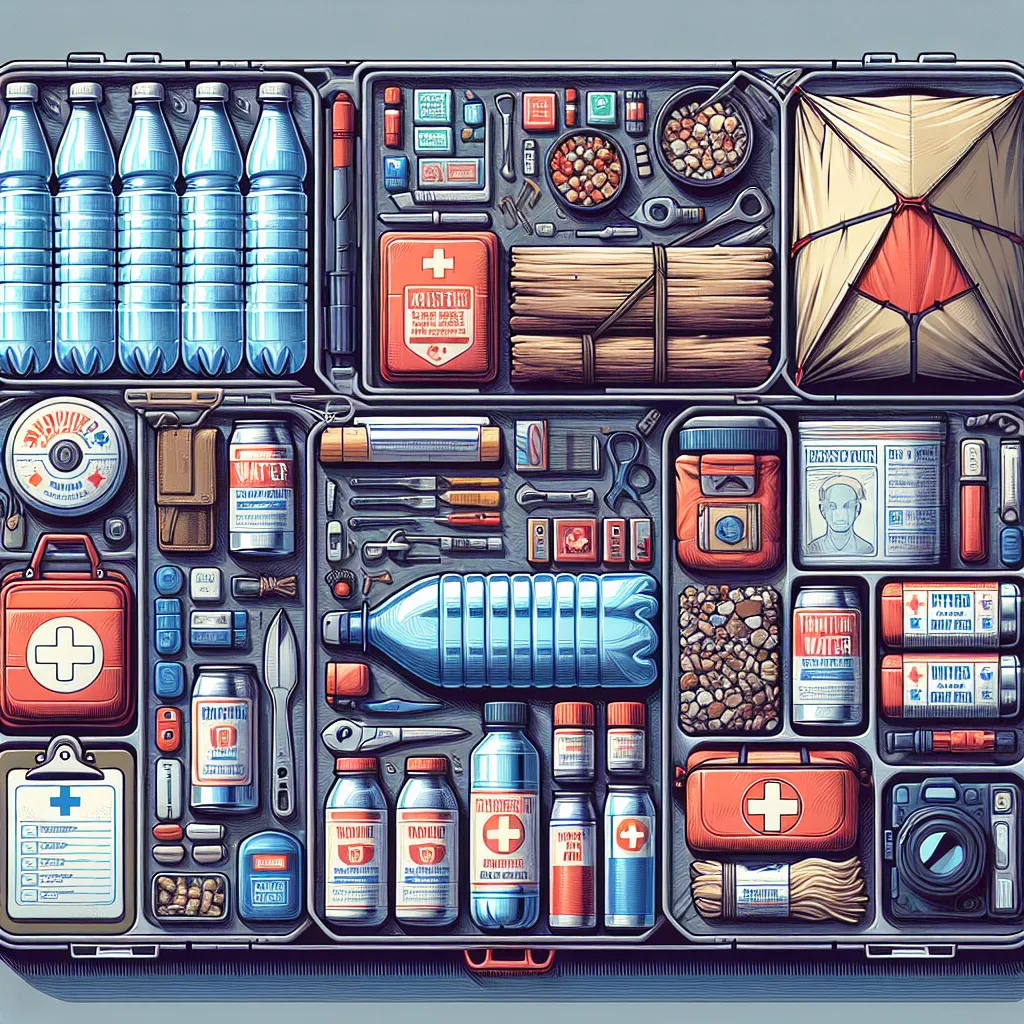Water and Hydration Essentials for Survival Kits
Water is one of the most essential components of a survival kit. In a survival situation, access to clean water is crucial for maintaining hydration and avoiding dehydration. When assembling a survival kit, it is important to include items that can help facilitate water procurement and purification. One of the easiest ways to ensure a safe water supply is by including portable water filtration systems or purification tablets. These items can effectively remove harmful bacteria and pathogens, making water safe for consumption.
In addition to water purification tools, it is also important to include containers for collecting and storing water. Collapsible water bottles or durable canteens are excellent choices, as they can be easily packed and carried. Furthermore, having a metal container for boiling water over a fire can provide an alternative method for water purification.
Hydration is a critical aspect of survival, and including electrolyte packets in the survival kit can help replenish essential minerals lost through sweating. These packets are lightweight and simple to add to any survival kit, providing a valuable resource for maintaining electrolyte balance in a challenging environment.
By prioritizing water and hydration essentials in a survival kit, individuals can better prepare themselves for unforeseen circumstances where access to clean water may be limited. Including the necessary tools for water procurement and purification can significantly improve the chances of survival in a variety of challenging situations.
Food and Nutrition Supplies for Your Survival Kit
When preparing a survival kit, it’s crucial to include food and nutrition supplies to sustain you during emergency situations. The right selection of food can make a significant difference in your ability to survive and stay energized. Key components of a well-rounded food and nutrition supply for your survival kit include non-perishable items such as canned goods, freeze-dried meals, high-energy snacks, and food bars. These foods should be high in protein, healthy fats, and carbohydrates to provide essential nutrients and keep your energy levels up.
Additionally, consider items that require minimal preparation and have a long shelf life. It’s important to include a manual can opener and utensils in your kit to ensure you can access and eat the food you’ve packed. Be mindful of any dietary restrictions or allergies when selecting food items for your kit, and rotate your supplies regularly to maintain freshness. Adequate hydration is also crucial, so be sure to include a supply of clean water or a portable water filtration system in your emergency kit.
By carefully considering the food and nutrition supplies for your survival kit, you can better prepare yourself for unforeseen circumstances and increase your chances of staying nourished and healthy during challenging times.
Shelter and Protection: Key Components in Survival Kits
When assembling a survival kit, one of the key components to consider is shelter and protection. In challenging outdoor situations, having the right gear for shelter and protection can make a critical difference in ensuring safety and well-being. The essential items to include in this category are a durable tent or emergency shelter, a sleeping bag or thermal blanket, and a reliable source of fire and light such as waterproof matches or a lighter.
First and foremost, a sturdy tent or emergency shelter is vital for protection against the elements. Look for a lightweight yet durable option that can withstand harsh weather conditions. Additionally, a high-quality sleeping bag rated for the appropriate temperature range is crucial for preserving body heat and promoting restful sleep during emergencies.
Furthermore, ensuring access to fire and light is indispensable for warmth, cooking, and signaling for help. Waterproof matches, lighters, or fire starter kits should be securely stored in the survival kit. It’s advisable to pack multiple fire-starting options in case one fails. Equally important, a reliable flashlight with extra batteries or a hand-cranked flashlight can provide illumination in the dark, enhancing safety and visibility.
By including these essential shelter and protection items in a survival kit, individuals can significantly enhance their ability to endure and survive challenging outdoor scenarios. Prioritizing these components ensures that individuals are better prepared to address the fundamental need for shelter, warmth, and safety in emergency situations.
Medical and First-Aid Necessities in Your Survival Kit
When it comes to assembling a survival kit, one of the most crucial aspects to consider is including medical and first-aid necessities. In a potentially life-threatening situation, having the right supplies can make all the difference. The essential components of a survival kit should always include items such as adhesive bandages, gauze pads, antiseptic wipes, medical tape, and sterile gloves. These basic supplies can help in treating minor injuries and preventing infections.
In addition to these fundamental items, it’s important to include more advanced medical supplies such as a tourniquet, medical scissors, a CPR mask, and a comprehensive first-aid manual. These supplies can be invaluable in the event of more serious injuries or medical emergencies. It’s also crucial to include personal medications if needed, as well as a supply of any prescription medications that may be necessary for ongoing medical conditions.
Furthermore, it’s essential to consider the specific medical needs of all individuals who will rely on the survival kit. This may include items such as EpiPens for those with severe allergies, insulin for diabetics, or specific medications for individuals with chronic medical conditions. Adequately addressing these specialized needs can be a matter of life or death in a survival situation.
By prioritizing the inclusion of medical and first-aid necessities in your survival kit, you can significantly enhance your ability to address injuries, illnesses, and medical emergencies in a challenging or remote environment. These supplies can provide a sense of security and preparedness, ensuring that you are equipped to handle unforeseen medical situations effectively.
